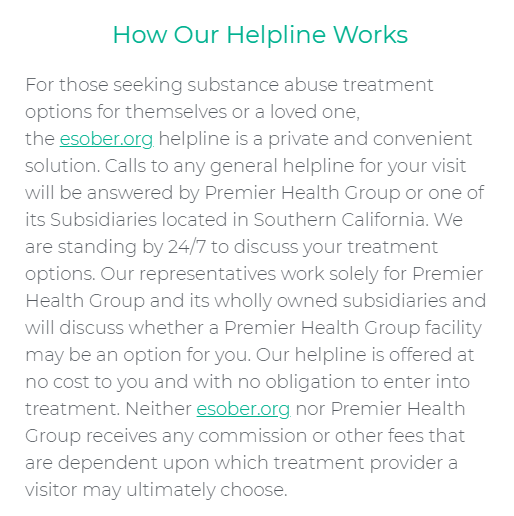People who deal with anxiety will often be prescribed a plethora of medications to help ease their mental stress. One of the most popular medicines that help deal with anxiety is Xanax.
Xanax, the trade name for alprazolam, is an anti-anxiety medication and part of a group of prescription drugs called benzodiazepines. However, this controlled drug, if misused, can cause dependence, which is why you can’t use Xanax without a prescription from a medical doctor.
Xanax Interactions
Xanax has fatal effects because, oftentimes, this drug is used with other drugs or alcohol. To understand this issue’s severity, you should know that the body clears Xanax through a cytochrome P450 3A (CYP3A).
When you take medications that inhibit CYP3A4, it makes it much harder to break down Xanax, potentially leading to an overdose. Some medications that interact poorly with Xanax are the following:
- Antifungal drugs: itraconazole and ketoconazole;
- Sedatives;
- Opioid pain medications: fentanyl or oxycodone;
- Muscle relaxants;
- Nefazodone: antidepressant medicines;
- Fluvoxamine: obsessive-compulsive disorder medication;
- Cimetidine: remedy for heartburn;
Aside from these medications, alcohol can also pose a huge threat to your life when you mix it with Xanax, as it ultimately increases your risk of having a lethal overdose.
This is why it’s essential to let your doctor know all the medications you are taking to ensure that you don’t mix the wrong drugs with your Xanax prescriptions. This includes over-the-counter medications, vitamins, and other nutritional supplements.
Xanax and Alcohol
When you ingest Xanax and alcohol, the side effect you get from both may intensify. According to researchers, this happens because there is a huge possibility that chemical interactions between Xanax and alcohol occur in the body.
Ethanol, the main ingredient of alcoholic beverages, can increase the concentration of alprazolam or Xanax in your bloodstream. This occurrence can cause an enhanced “buzz” and other side effects. Besides that, the liver needs to work harder because it needs to break down compounds from the alcohol and Xanax you’ve taken.
As for sedation, both substances have sedative effects. This means they can trigger fatigue, drowsiness, and in some cases, impairment. Besides that, Xanax and alcohol can also affect your muscles, decreasing muscle control, coordination, and balance.
Xanax Overdose
The possibility of overdose is with Xanax, especially if you’re taking this prescription with other drugs and medications and alcohol. And if you’re not careful, overdose can also lead to fatal effects. Most severe or fatal Xanax-related overdoses are often taken with other drugs like opioid pain medications or alcohol.

Xanax is a drug categorized as benzodiazepine — a drug that boosts a chemical acid activity in the brain called gamma-aminobutyric acid or GABA. The job of GABA is to help calm the nerves in the brain by inducing feelings of relaxation.
Xanax Side Effects
Just like any drug, Xanax has multiple notable side effects. This is why it’s important to note these side effects so that you can let your health provider know your current condition or if you need immediate medical assistance.
Here are some possible side effects you may experience with Xanax intake:
- Allergic reactions in the skin, face, lips, or tongue;
- Changes in appetite;
- Changes in sex drive;
- Forgetfulness;
- Confusion;
- Depression;
- Poor motor skills;
- Difficulty speaking;
- Drowsiness;
- Feeling lightheaded or faint;
- Trouble urinating;
- Feeling weak and tired;
Besides the effects mentioned above, there are other moods and behavioral effects you need to consider. Because Xanax can lead to a depressed mood, a patient who takes this medication can be irritable and confused most of the time. And in some severe cases, suicidal thoughts may occur. Here are other rare side effects you need to note:
- Aggression;
- Anger or rage;
- Hostile behavior;
And when you add alcohol into the picture, other changes in the person’s mood and behavior may occur, such as a temporary mood boost or intense feelings of sadness. Additionally, alcohol can also lower a person’s inhibitions and impairs their judgment, making the person do things they don’t usually do.
As for physical side effects, you should know that a person can experience headaches, low blood pressure, and blurred vision when taking big doses of Xanax. Besides that, Xanax is also associated with gastrointestinal symptoms, including diarrhea, vomiting, and nausea.
Unfortunately, Xanax and alcohol use also has long-term effects and is also associated with the development of physical and psychological dependence. When this happens, your body gets used to having both substances in the system, and you need it to function without experiencing the side effects of withdrawals.
Here are some of the long-term effects when you take Xanax and alcohol:
- Changes in appetite and weight;
- Increased cognitive and memory impairments;
- Changes in personality and mood;
- Decreased sex drive;
- Increased risk of depression;
- Increased risk of liver damage and failure;
- Increased risk of cancer;
- Increased risk of heart disease, stroke, and other chronic illnesses;
Xanax High
A common misconception by many people is that alprazolam is a harmless stress reliever and could be taken casually. However, recreational use of Xanax is not legal and highly unsafe.
When you get high with Xanax, the heightened euphoria one feels encourages abuse and recreational use. In some cases, illicit users choose to chew the medication, inject it, or even snort it — all of which cause effects to kick in much faster.
Xanax Addiction
When a person has an addiction or a substance use disorder, this person uses the substance for pleasurable action without considering the negative consequences it may cause. Some consequences may be related to their lifestyle in their finances, work, and interpersonal relations.
Xanax addiction may develop over months and years and could be quite tricky to identify at first. But if you notice that a person cannot stop using the drop without experiencing withdrawal symptoms, they may be dependent on Xanax.
How Long Does Xanax Last?
Although Xanax is a pretty quick drug, it also wears off quite fast, in roughly five hours; this is why it is taken multiple times a day.
A standard dose of Xanax with anxiety disorders is 0.25 to 0.5mg three times per day, as per the Food and Drug Administration. For people with panic disorders, .05mg three times a day would suffice. And depending on their current mental state, the dosage could slowly increase.
An extended version of Xanax is called Xanax XR, which should only be taken once a day. Although both medications are essentially the same, they work a bit differently. So, even if they both help control anxiety disorders, panic disorders, and depression, Xanax XR effectively stays in the body for 11 hours.
Xanax Withdrawal
Because Xanax has a half-life of 11 hours, this means that it takes 50 hours for the body to remove the medication completely out of your system. But since Xanax has the shortest life compared to other benzodiazepines, withdrawal symptoms can set in much faster than other similar drugs.
Before you can stop taking Xanax, you must be tapered for safety. Stopping Xanax “cold-turkey” could lead to severe side effects, including seizures and stroke. To safely stop taking Xanax, you must consult professional medical help and consider getting substance use disorder treatment.
The Bottom Line: Xanax and Alcohol Shouldn’t Be Misused
Xanax and alcohol or both powerful substances that could give you a sense of euphoria but could put you at risk of fatal effects. Ensure that your doctor prescribes you the right medication and not mix Xanax with other drugs for treatment.
Sources:
https://www.drugabuse.gov/drug-topics/opioids/benzodiazepines-opioids




